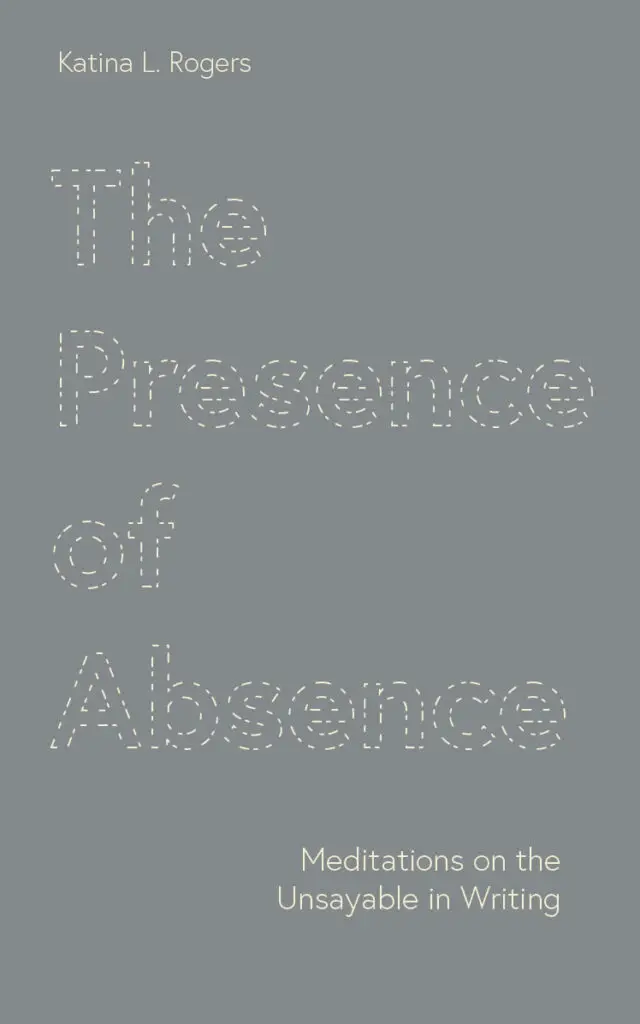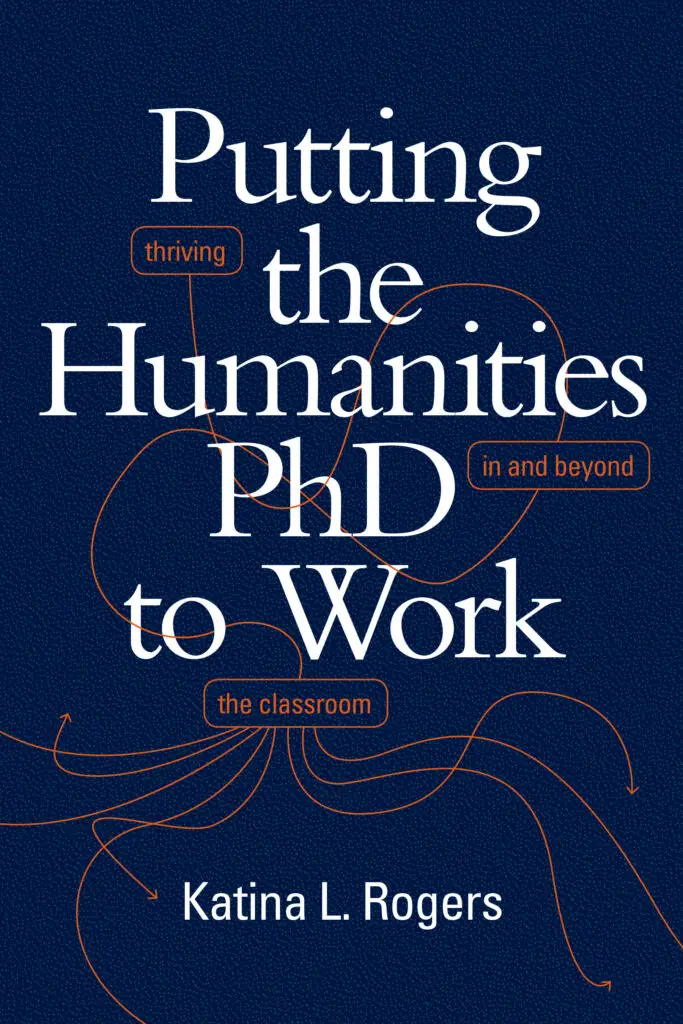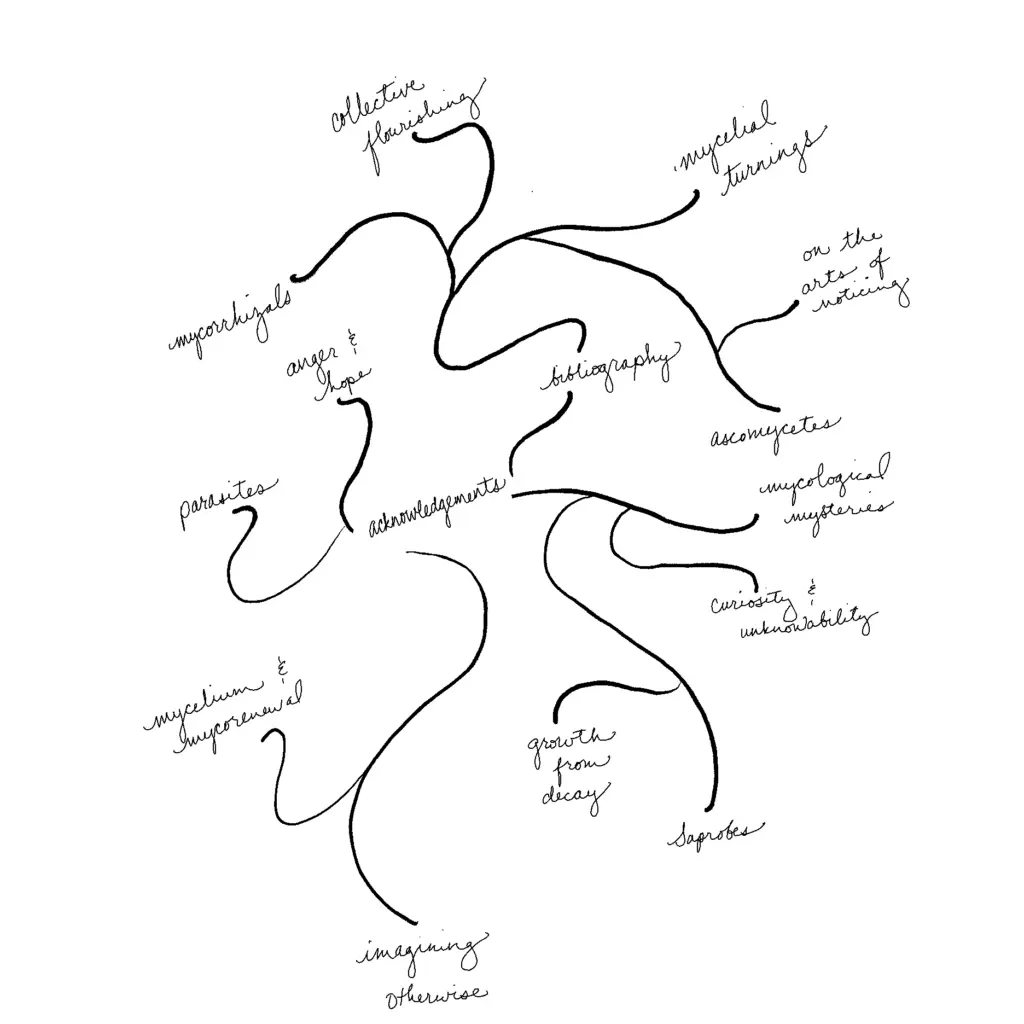Writing is an integral part of how I understand the world around me. I’ve written two books, with a third under contract; each is completely different from the others.
Read on to find out more about them.
The Presence of Absence:
Meditations on the Unsayable in Writing

The Presence of Absence: Meditations on the Unsayable in Writing is about writers navigating the unspeakable through image, sound, and structure. Each chapter focuses on a specific text, exploring the ways that four writers look to visual and auditory materials and metaphors as passageways to understanding and expressing the ineffable qualities of relationships, identity, and grief. Through gorgeously slow and close readings, Rogers explores absence and excess, fragmentation and translation, and — above all — the push and pull between presence and absence, with absence carrying as much significance as presence (and sometimes more).
The Presence of Absence crosses languages and disciplines, working in French and English across poetry, photography, history, and literary theory. Through investigations of Nox by Anne Carson, Quelque chose noir by Jacques Roubaud, Wayward Lives, Beautiful Experiments by Saidiya Hartman, and Le livre des questions by Edmond Jabès, Rogers explores various truths — about loss but also about knowledge, beauty, even higher education — that are difficult to articulate and yet resonate deeply with lived experience.
Putting the Humanities PhD to Work:
Thriving in and beyond the Classroom

In Putting the Humanities PhD to Work Katina L. Rogers grounds practical career advice in a nuanced consideration of the current landscape of the academic workforce. Drawing on surveys, interviews, and personal experience, Rogers explores the evolving rhetoric and practices regarding career preparation and how those changes intersect with admissions practices, scholarly reward structures, and academic labor practices—especially the increasing reliance on contingent labor. Rogers invites readers to consider how graduate training can lead to meaningful and significant careers beyond the academy. She provides graduate students with context and analysis to inform the ways they discern their own potential career paths while taking an activist perspective that moves toward individual success and systemic change. For those in positions to make decisions in humanities departments or programs, Rogers outlines the circumstances and pressures that students face and gives examples of programmatic reform that address career matters in structural ways. Throughout, Rogers highlights the important possibility that different kinds of careers offer engaging, fulfilling, and even unexpected pathways for students who seek them out.
Unexpected Flourishing:
Growth from Decay in the Mycelial University

Unexpected Flourishing: Growth from Decay in the Mycelial University uses the ecological functions of fungi as a lens to consider possibilities for collective thriving. This book considers the higher education landscape as it is now while offering a speculative consideration of what might be possible if scholars, administrators, and instructors adopted different value structures and different ways of making meaning in community. The underlying focal point is one of abundance, sustenance, and joy.
My latest book project focuses on interdependence, coalition building, and collective thriving through a metaphorical view of ecology and mycology. Learning about fungi—especially about mycelium, mycorrhizal networks, and mycorenewal—has changed the way I think. Mycelium, the underground root-like structures that constitute most of the biomass of fungi, are constantly at work, even in environmentally disrupted areas ravaged by fires or toxic waste. The mycorrhizal network is the multispecies web of mycelium and plant roots that transfers nutrients and fosters an interdependent ecosystem. Finally, mycorenewal is the process of ecosystem regeneration that occurs through the interactions among fungi, other living beings such as bacteria and plants, and dead organic matter. This interdependence is at once robust and precarious. My book asks: What if that collectivity were a baseline for how we teach, learn, and share knowledge?
Higher education is in many ways a ravaged landscape of diminished public funding, exploitative labor practices, and endless stories of racism, ableism, and sexual harassment—and yet, beauty and curiosity continue to emerge. I draw on the hope and possibility of mycorenewal to ask what possibilities for unexpected flourishing we can find within higher education’s decay, and how we can cultivate conditions where these possibilities can thrive: a mycelial university. Fungi emerge in improbable places, with ephemeral fruiting bodies that belie the longevity (and immensity) of the mycelial mats below. If the inherited structures of the university are the rotting log, everyday actions of care and resistance are the mycelium, quietly spinning threads of connection. Focusing on—and encouraging—these elements might result in a university that is better able to foster the growth that crops up in unexpected places.
Stay tuned for more on this project!
